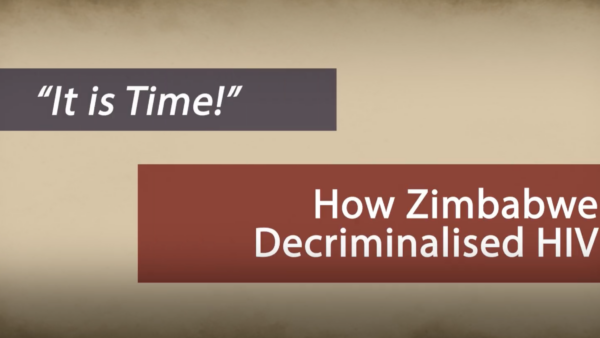
HIV Stigma Can Be More Dangerous Than The Disease Itself
In the past 20 years the medical implications of an HIV diagnosis have changed completely, almost miraculously. Antiretroviral drugs allow people living with HIV to have unprotected sex without passing the virus to their partners, to have HIV-negative children and to live healthy lives well into old age.
In fact, in 2016 the stigma surrounding HIV is probably more life-threatening than HIV itself. The fear of being “outed” as HIV positive stops a lot of people from seeking treatment. A delay in treatment allows the virus to spread, and in many cases, leads to death.
Stigma has many causes, one of which is a genuine fear of contagion. Despite the fact that HIV is now a treatable condition, “educational” messages on HIV prevention are still based on fear, and almost universally exaggerate the risks of HIV infection and its consequences.
Many of us still seem to view HIV as a life-threatening disease rather than a relatively mild condition.
Most people think that HIV is transmitted easily through unprotected sex, though the transmission rate is less than one per cent per act. When a person is taking antiretroviral drugs, the virus is suppressed and transmission is nearly impossible. Many of us still seem to view HIV as a life-threatening disease rather than a relatively mild condition.
In Canada, a person who is diagnosed with HIV and has unprotected sex can be sent to jail for aggravated sexual assault, even if they are taking medication and are virally suppressed. Such criminal convictions are based on and perpetuate misinformation. When it comes to HIV prevention, proper adherence to antiretroviral drugs is actually more effective than condoms.
What’s more, Canadian policy specifically discourages testing and treatment, because a diagnosis makes you criminally responsible. Treatment prevents the spread of HIV, so a policy that criminalizes HIV transmission could actually increase the spread of the virus. Even worse — high-risk individuals (those who frequently engage in unprotected sex) are the most susceptible to a conviction and therefore the least likely to get tested and treated. In November, the United Nations urged Canada to limit criminalization to cases of intentional transmission.
I study barriers to HIV testing in Malawi, a small country in southern Africa with an HIV infection rate of around 15 per cent. I recently ran a large-scale information experiment to correct a common misconception: most participants didn’t know that an HIV-infected person who is taking antiretroviral drugs is not contagious. Providing this information reduced stigma at the community level which caused a significant increase in HIV testing.
While Canada is a long way from Malawi, the social issues surrounding HIV are in some ways similar. Approximately one in five people living with HIV are undiagnosed. Misinformation and an inflated fear of HIV infection are widespread.
In a 2012 survey of Canadians commissioned by the Public Health Agency of Canada, nearly half believed that AIDS was always fatal, and only one-third believed that antiretroviral drugs were very effective. Half of survey respondents were not comfortable drinking from a glass once used by an HIV-infected person.
I understand the instinct to overstate the risks of HIV in order to encourage prevention, but messages that stoke fear and stigmatize HIV come with serious unintended consequences. Antiretroviral drugs are our best hope of ending the HIV epidemic.
In fact, “treatment as prevention” was a strategy developed right here in Canada, at the B.C. Centre for Excellence in HIV/AIDS. It has now been embraced by both the UN and the WHO. Rather than pushing prevention through fear, we should mobilize to support people living with HIV.
Good policy should focus not on fear, but on providing accurate information, encouraging HIV testing and providing universal access to life-saving medication.







